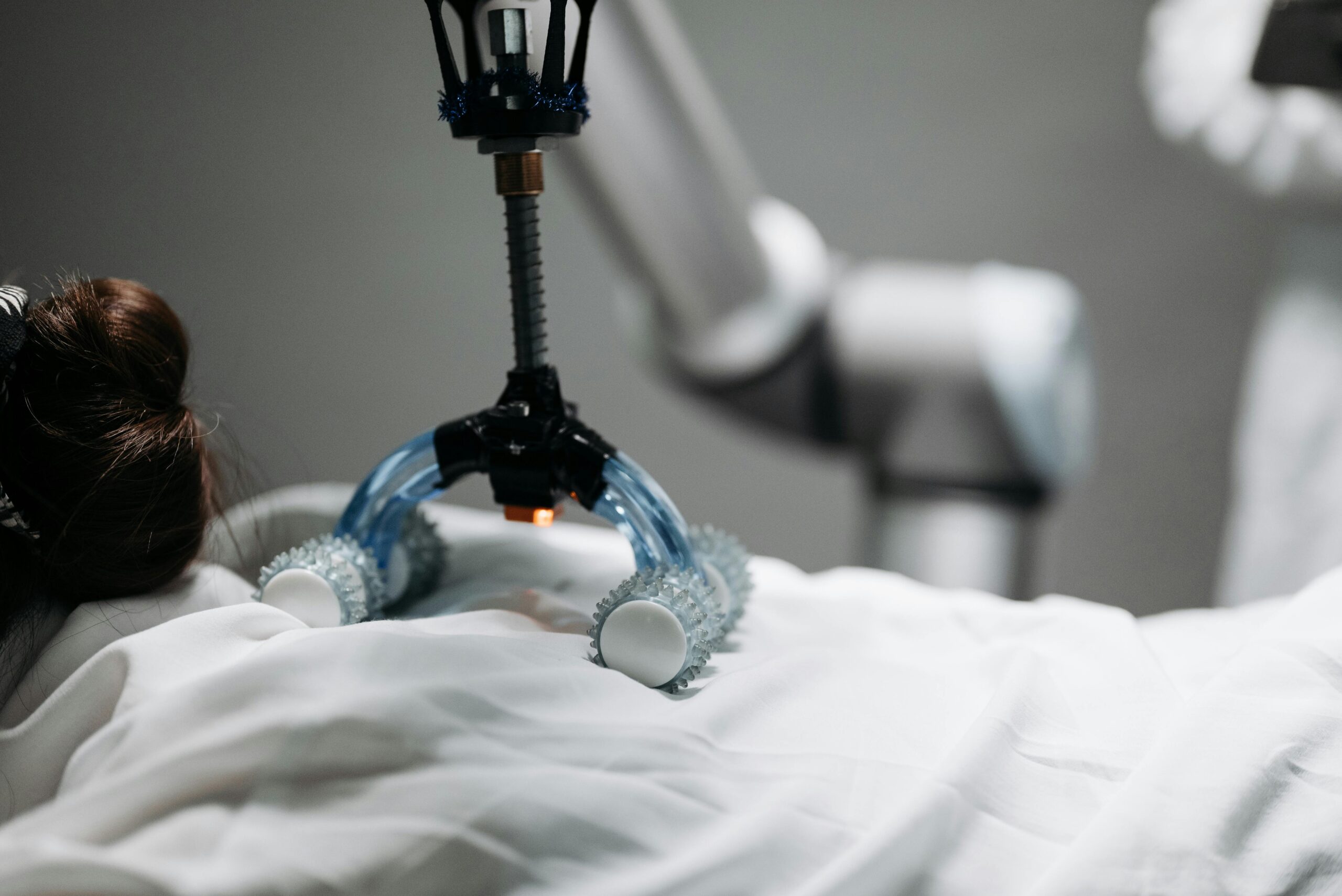Tissue engineering and biofabrication are transforming modern healthcare, offering unprecedented solutions for organ replacement, disease modeling, and personalized medicine through innovative cellular construction techniques.
🔬 The Dawn of Biological Manufacturing
The convergence of biology, engineering, and materials science has ushered in an era where creating living tissues in laboratories is no longer science fiction. Biofabrication techniques represent a paradigm shift in how we approach medical treatment, moving beyond traditional pharmaceutical interventions and surgical procedures toward regenerative solutions that harness the body’s innate healing capabilities.
Traditional medicine has long relied on organ transplantation, which faces critical limitations including donor shortages, immunological rejection, and ethical concerns. Biofabrication addresses these challenges by enabling the creation of patient-specific tissues and organs using the individual’s own cells, dramatically reducing rejection risks while eliminating dependency on donor availability.
The global tissue engineering market has experienced exponential growth, with projections indicating it will reach unprecedented valuations within the next decade. This expansion reflects not only technological advances but also increasing recognition among healthcare providers and patients of biofabrication’s transformative potential.
Understanding Biofabrication: More Than Just 3D Printing
Biofabrication encompasses various techniques for producing biological materials, tissues, and organs through controlled assembly of living cells, biomaterials, and biochemical factors. While 3D bioprinting often dominates public discourse, the field extends far beyond this single technology.
At its core, biofabrication seeks to replicate the complex architecture of natural tissues. Human organs aren’t simply masses of identical cells; they possess intricate structures with precisely organized cellular arrangements, vascular networks, and extracellular matrices that determine their functionality. Recreating this complexity requires sophisticated approaches that integrate multiple disciplines.
Key Biofabrication Technologies Reshaping Healthcare
Several primary technologies drive contemporary biofabrication efforts, each offering unique advantages for specific applications:
- Extrusion-based bioprinting: Deposits cell-laden bioinks layer by layer, ideal for creating structures with moderate resolution and high cell density
- Inkjet bioprinting: Delivers precise droplets of biomaterials and cells, offering high resolution for detailed tissue architectures
- Laser-assisted bioprinting: Uses laser energy to transfer cells with exceptional precision, maintaining high cell viability
- Stereolithography: Employs light-activated polymerization to create complex geometries with remarkable detail
- Electrospinning: Generates fibrous scaffolds that mimic natural extracellular matrix structures
- Microfluidic systems: Enable precise control over cellular microenvironments for organ-on-chip applications
🧬 The Building Blocks: Cells, Scaffolds, and Bioinks
Successful biofabrication depends on three fundamental components working in harmony: cells that provide biological functionality, scaffolds that offer structural support, and bioinks that facilitate the fabrication process while maintaining cellular viability.
Cellular Sources: From Stem Cells to Differentiated Tissues
Cell selection represents a critical decision in tissue engineering projects. Pluripotent stem cells offer remarkable versatility, capable of differentiating into virtually any cell type, making them invaluable for complex tissue construction. However, controlling their differentiation and preventing uncontrolled proliferation remain significant challenges.
Adult stem cells provide a more specialized alternative, already committed to specific lineages while retaining some differentiation capacity. Induced pluripotent stem cells (iPSCs) have revolutionized the field by allowing scientists to reprogram adult cells back to a pluripotent state, enabling patient-specific tissue engineering without ethical concerns associated with embryonic stem cells.
Primary cells harvested directly from patients or donors offer immediate functionality but face limitations in availability and expansion capacity. The choice depends on the specific application, desired tissue complexity, and scalability requirements.
Biomaterials: Engineering the Cellular Environment
Scaffolds and bioinks must satisfy demanding requirements: biocompatibility to avoid adverse immune responses, biodegradability at rates matching tissue formation, appropriate mechanical properties mimicking native tissues, and porosity supporting nutrient diffusion and waste removal.
Natural biomaterials like collagen, gelatin, alginate, and hyaluronic acid offer excellent biocompatibility and contain biological signals promoting cellular attachment and proliferation. However, they often lack mechanical strength and exhibit batch-to-batch variability.
Synthetic polymers such as polylactic acid (PLA), polyglycolic acid (PGA), and polycaprolactone (PCL) provide reproducible properties and tunable degradation rates but require modification to improve cellular interactions. Hybrid approaches combining natural and synthetic materials aim to capture the advantages of both categories.
💡 Breakthrough Applications Transforming Patient Care
Biofabrication technologies are progressing from laboratory curiosities to clinical realities across multiple medical specialties, offering solutions previously considered impossible.
Skin Regeneration: Leading the Clinical Translation
Engineered skin represents one of biofabrication’s most mature applications. Several products have received regulatory approval and are commercially available for treating burns, chronic wounds, and diabetic ulcers. These constructs range from simple cellular sheets to complex multilayer structures incorporating dermal and epidermal components.
Advanced skin substitutes now incorporate blood vessels, hair follicles, and sweat glands, approaching the functionality of native skin. This progress has transformed treatment for severe burn victims, who previously faced limited options beyond traditional grafting techniques with their associated complications and scarring.
Cartilage and Bone: Rebuilding Skeletal Structures
Orthopedic applications have embraced biofabrication enthusiastically. Cartilage tissue engineering addresses the challenging problem of articular cartilage repair, which has limited natural healing capacity. Bioprinted cartilage constructs show promise for treating osteoarthritis and joint injuries, potentially delaying or eliminating the need for joint replacement surgeries.
Bone tissue engineering has achieved remarkable success with custom-designed scaffolds promoting bone regeneration in craniofacial reconstruction, spinal fusion, and large bone defects. These scaffolds can be loaded with growth factors and cells, accelerating healing while matching the patient’s unique anatomy through imaging-guided design.
Cardiovascular Tissues: Addressing Leading Causes of Mortality
Heart disease remains the leading cause of death globally, making cardiac tissue engineering particularly impactful. Researchers have successfully bioprinted cardiac tissues demonstrating synchronized beating and appropriate electrophysiological properties. While complete heart replacement remains distant, engineered cardiac patches show promise for repairing myocardial infarction damage.
Vascular tissue engineering addresses another critical need: creating blood vessels for bypass surgery and improving engineered tissue vascularization. Without adequate blood supply, larger tissue constructs cannot survive. Bioprinted vascular networks represent a crucial enabling technology for complex organ fabrication.
🏥 Organ-on-Chip: Revolutionizing Drug Development
Beyond replacement organs, biofabrication has spawned organ-on-chip technologies that recreate organ-level functionality in miniaturized devices. These microfluidic platforms incorporate human cells in architectures mimicking native tissue organization and mechanical forces, providing more physiologically relevant models than traditional cell cultures.
Pharmaceutical companies increasingly adopt organ-on-chip platforms for drug testing, as they better predict human responses than animal models while reducing costs and ethical concerns. Liver-on-chip, lung-on-chip, and kidney-on-chip devices enable researchers to assess drug metabolism, toxicity, and efficacy with unprecedented accuracy.
Multi-organ chips connecting multiple organ systems allow studying systemic drug effects and organ-organ interactions, capturing complexity impossible in isolated systems. This technology promises to accelerate drug development while improving safety profiles.
🚧 Challenges Standing Between Vision and Reality
Despite remarkable progress, significant obstacles must be overcome before biofabrication reaches its full potential in routine clinical practice.
Vascularization: The Critical Bottleneck
Creating functional blood vessel networks within engineered tissues remains the field’s most significant technical challenge. Tissues thicker than a few millimeters require vascular networks delivering oxygen and nutrients while removing metabolic waste. Without adequate vascularization, cells in the construct’s interior die from insufficient oxygen supply.
Researchers are exploring multiple approaches: printing sacrificial materials that create channels upon removal, co-culturing endothelial cells that self-organize into vessels, and incorporating angiogenic growth factors promoting vessel ingrowth from surrounding tissues. Combining these strategies may ultimately solve this critical problem.
Scalability and Manufacturing Consistency
Translating laboratory successes to clinical-scale production poses substantial challenges. Current biofabrication techniques often involve manual steps, batch-to-batch variability, and long production times incompatible with commercial viability.
Automated biofabrication platforms with real-time quality control, standardized protocols ensuring reproducibility, and cold-chain logistics maintaining tissue viability during transport all require development before widespread clinical adoption becomes feasible.
Regulatory Pathways: Navigating Uncharted Territory
Regulatory agencies face unprecedented challenges classifying biofabricated products. Are they devices, drugs, biologics, or entirely new categories requiring novel regulatory frameworks? The answer affects approval pathways, clinical trial requirements, and post-market surveillance.
Different jurisdictions approach these questions differently, creating regulatory fragmentation that complicates international commercialization. Harmonizing regulatory standards while ensuring patient safety represents an ongoing challenge requiring collaboration between regulators, researchers, and industry stakeholders.
🌟 The Road Ahead: Emerging Innovations and Future Directions
The biofabrication field continues evolving rapidly, with emerging technologies promising to address current limitations and enable previously impossible applications.
Artificial Intelligence and Machine Learning Integration
AI algorithms are increasingly employed to optimize bioprinting parameters, predict cell behavior, and design tissue architectures. Machine learning models analyze vast datasets identifying patterns human researchers might miss, accelerating development cycles and improving success rates.
Computational modeling combined with AI can simulate tissue maturation, predict mechanical properties, and optimize scaffold designs before physical fabrication, reducing costly trial-and-error experimentation.
In Situ Bioprinting: Treating Tissues Where They Are
Rather than fabricating tissues externally and implanting them, in situ bioprinting deposits cells and biomaterials directly onto or into defect sites during surgical procedures. Handheld bioprinting devices enable surgeons to precisely fill irregular wounds, burns, or bone defects with patient-matched tissues.
This approach eliminates challenges associated with handling and transporting fragile engineered tissues while allowing real-time customization to each patient’s unique anatomy. Clinical trials are demonstrating promising results for various applications.
Four-Dimensional Bioprinting: Adding the Time Element
4D bioprinting incorporates materials that change properties over time in response to environmental stimuli like temperature, pH, or biological signals. These “smart” materials can self-assemble into complex structures after printing, fold into desired configurations, or degrade at programmed rates.
This technology could simplify creating intricate architectures difficult to print directly while enabling engineered tissues that evolve and remodel like natural tissues during development and healing.
💊 Personalized Medicine: Tissues Tailored to Individual Patients
Biofabrication’s ultimate promise lies in truly personalized medicine. Using a patient’s own cells to create replacement tissues eliminates immunological rejection while accounting for individual genetic variations affecting treatment responses.
Imagine a future where accident victims receive custom-printed skin grafts manufactured from their cells within hours, arthritis patients obtain bioprinted cartilage restoring joint function without immunosuppression, and cancer patients test treatment regimens on their tumor-derived organoids before beginning therapy, identifying the most effective approach while avoiding toxic ineffective treatments.
This vision requires continued technological advancement, but the foundational technologies already exist. Scaling them to clinical practice represents primarily an engineering and economic challenge rather than a scientific impossibility.
🌍 Global Impact: Democratizing Advanced Healthcare
As biofabrication technologies mature and costs decrease, they hold potential for addressing global healthcare disparities. Organ shortages affect patients worldwide, but low- and middle-income countries face particularly severe shortfalls in transplantation infrastructure.
Decentralized biofabrication facilities could manufacture tissues locally, avoiding expensive international cold-chain transport while creating specialized employment opportunities. Open-source bioprinting designs and accessible biomaterials would democratize access, ensuring these revolutionary treatments benefit humanity broadly rather than remaining luxury options for wealthy populations.

🔮 Envisioning Medicine’s Biofabricated Future
The convergence of tissue engineering, biofabrication, stem cell biology, and digital technologies is fundamentally reshaping medicine’s landscape. Within the coming decades, engineered tissues and organs will likely transition from experimental treatments to standard care for numerous conditions.
Hospital biofabrication facilities may become as common as today’s pharmacies, producing custom tissues on demand. Regenerative medicine could shift healthcare’s focus from managing chronic diseases to curing them by replacing damaged tissues with functional alternatives.
The journey from laboratory innovation to clinical standard of care is lengthy and complex, requiring sustained investment, interdisciplinary collaboration, and regulatory evolution. However, the progress achieved in recent years demonstrates that these goals are achievable rather than merely aspirational.
As techniques become more sophisticated, costs decrease, and regulatory pathways clarify, biofabrication will increasingly fulfill its promise of revolutionizing medicine. The question is no longer whether engineered tissues will transform healthcare, but rather how quickly we can overcome remaining obstacles to make this transformation universal and accessible to all who need it.
The future of medicine is being printed, cell by cell, layer by layer, bringing us closer to a world where organ failure need not be fatal, where injuries heal without scars, and where personalized biological solutions replace one-size-fits-all treatments. This future, once confined to imagination, is rapidly becoming our present reality.
Toni Santos is a deep-biology researcher and conscious-evolution writer exploring how genes, microbes and synthetic life inform the future of awareness and adaptation. Through his investigations into bioinformatics, microbiome intelligence and engineered living systems, Toni examines how life itself becomes a field of awakening, design and possibility. Passionate about consciousness in biology and the evolution of living systems, Toni focuses on how life’s architecture invites insight, coherence and transformation. His work highlights the convergence of science, philosophy and emergent life — guiding readers toward a deeper encounter with their living world. Blending genetics, systems biology and evolutionary philosophy, Toni writes about the future of living systems — helping readers understand how life evolves through awareness, integration and design. His work is a tribute to: The intertwining of biology, consciousness and evolution The emergence of microbial intelligence within and around us The vision of life as designed, adaptive and self-aware Whether you are a scientist, thinker or evolving being, Toni Santos invites you to explore the biology of tomorrow — one gene, one microbe, one awakening at a time.




